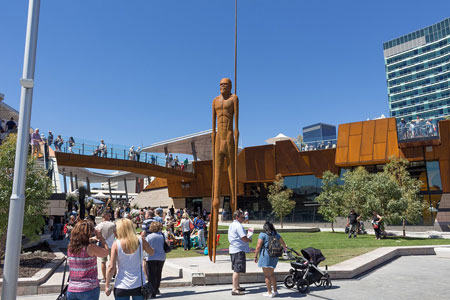Perth Translation Services » Hungarian translator » Hungarian Brochure Translation
Hungarian Brochure Translation
Perth Translation Services provides Hungarian brochure translations for businesses and government departments in Australia. As a professional translation services provider, we offer fast and quality Hungarian brochure translations, and are able to typeset Hungarian translations into existing design files.
We usually work with InDesign project folders shared by clients, and deliver multilingual brochures from a single brochure in English.
Working with local Hungarian translators, designers and typesetters, you can be assured your project gets delivered by professionals familiar with the local culture and terminology used in Australia, and any project feedback gets addressed quickly.
Hungarian Brochure Translators
Enquire with us today
Latest Testimonials


About the Hungarian Language
Hungarian is a Finno-Ugric language, which is a member of the Uralic language family. The group of Finno-Ugric languages also includes Finnish, Estonian, Lappic (Sámi) and some other languages spoken in the Russian Federation. Out of these it is Khanty and Mansi that are the most closely related to Hungarian. The Hungarian name for the language is magyar.
The traditional view holds that the Hungarian language diverged from its Ugric relatives in the first half of the 1st millennium BC, in western Siberia east of the southern Urals. The Hungarians gradually changed their lifestyle from being settled hunters to being nomadic pastoralists, probably as a result of early contacts with Iranian (Scythians and Sarmatians) or Turkic nomads. In Hungarian, Iranian loanwords date back to the time immediately following the breakup of Ugric and probably span well over a millennium. Among these include tehén ‘cow’ (cf. Avestan dhaénu); tíz ‘ten’ (cf. Avestan dasa); tej ‘milk’ (cf. Persian dáje ‘wet nurse’); and nád ‘reed’ (from late Middle Iranian; cf. Middle Persian nāy).
Archaeological evidence from present day southern Bashkortostan confirms the existence of Hungarian settlements between the Volga River and the Ural Mountains. The Onogurs (and Bulgars) later had a great influence on the language, especially between the 5th and 9th centuries. This layer of Turkic loans is large and varied (e.g. szó "word", from Turkic; and daru "crane", from the related Permic languages), and includes words borrowed from Oghur Turkic; e.g. borjú "calf" (cf. Chuvash păru, părăv vs. Turkish buzağı); dél ‘noon; south’ (cf. Chuvash tĕl vs. Turkish dial. düš). Many words related to agriculture, state administration and even family relationships show evidence of such backgrounds. Hungarian syntax and grammar were not influenced in a similarly dramatic way over these three centuries.
After the arrival of the Hungarians in the Carpathian Basin, the language came into contact with a variety of speech communities, among them Slavic, Turkic, and German. Turkic loans from this period come mainly from the Pechenegs and Cumanians, who settled in Hungary during the 12th and 13th centuries: e.g. koboz "cobza" (cf. Turkish kopuz ‘lute’); komondor "mop dog" (< *kumandur < Cuman). Hungarian borrowed many words from neighbouring Slavic languages: e.g. tégla ‘brick’; mák ‘poppy’; karácsony ‘Christmas’). These languages in turn borrowed words from Hungarian: e.g. Serbo-Croatian ašov from Hungarian ásó ‘spade’. About 1.6 percent of the Romanian lexicon is of Hungarian origin.
Recent studies support an origin of the Uralic languages, including early Hungarian, in eastern or central Siberia, somewhere between the Ob and Yenisei river or near the Sayan mountains in the Russian-Mongolian borderregion. A 2019 study based on genetics, archaeology and linguistics, found that early Uralic speakers arrived from the East, specific from eastern Siberia, to Europe. Today the language holds official status nationally in Hungary and regionally in Romania, Slovakia, Serbia, Austria and Slovenia.

